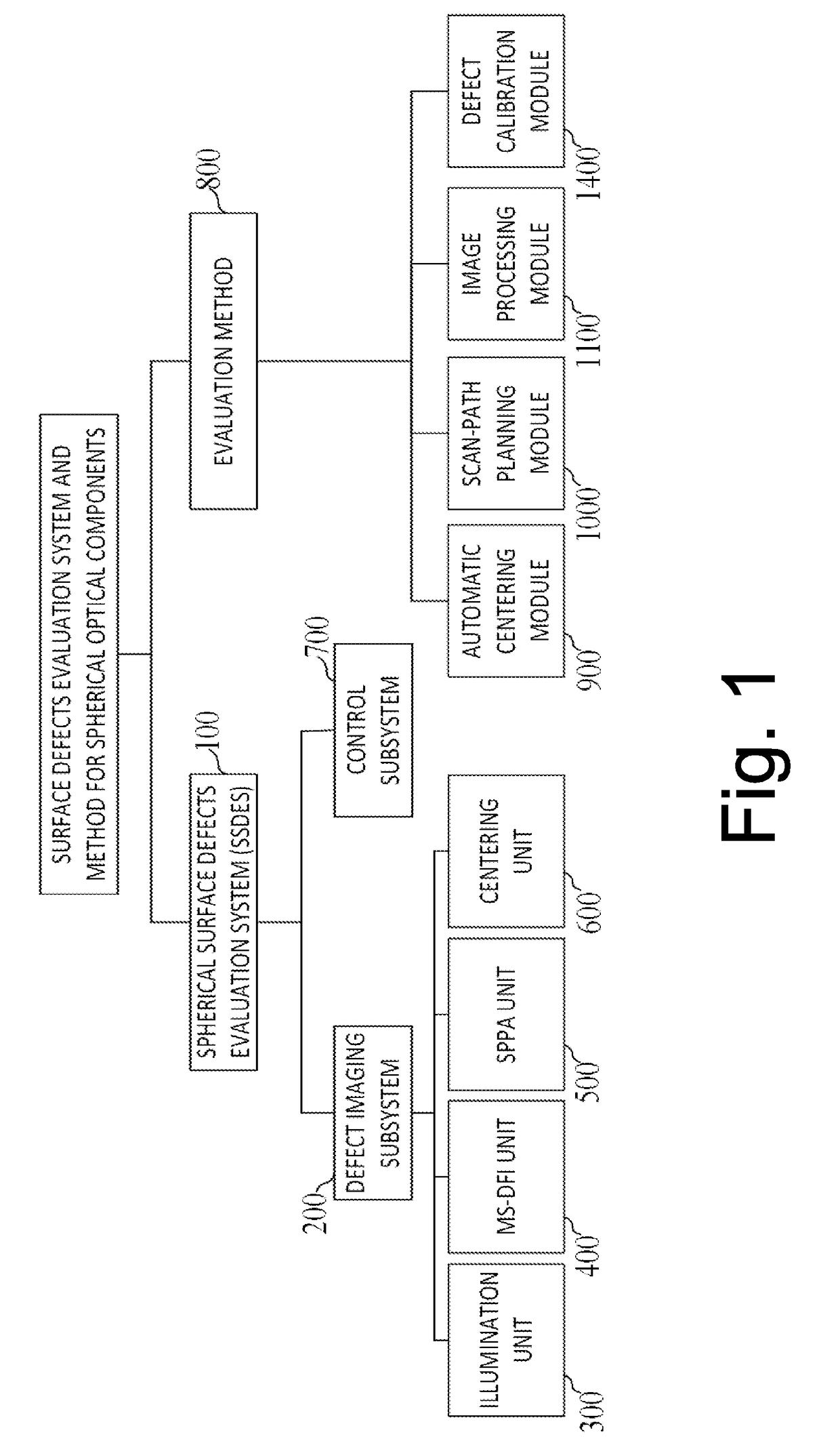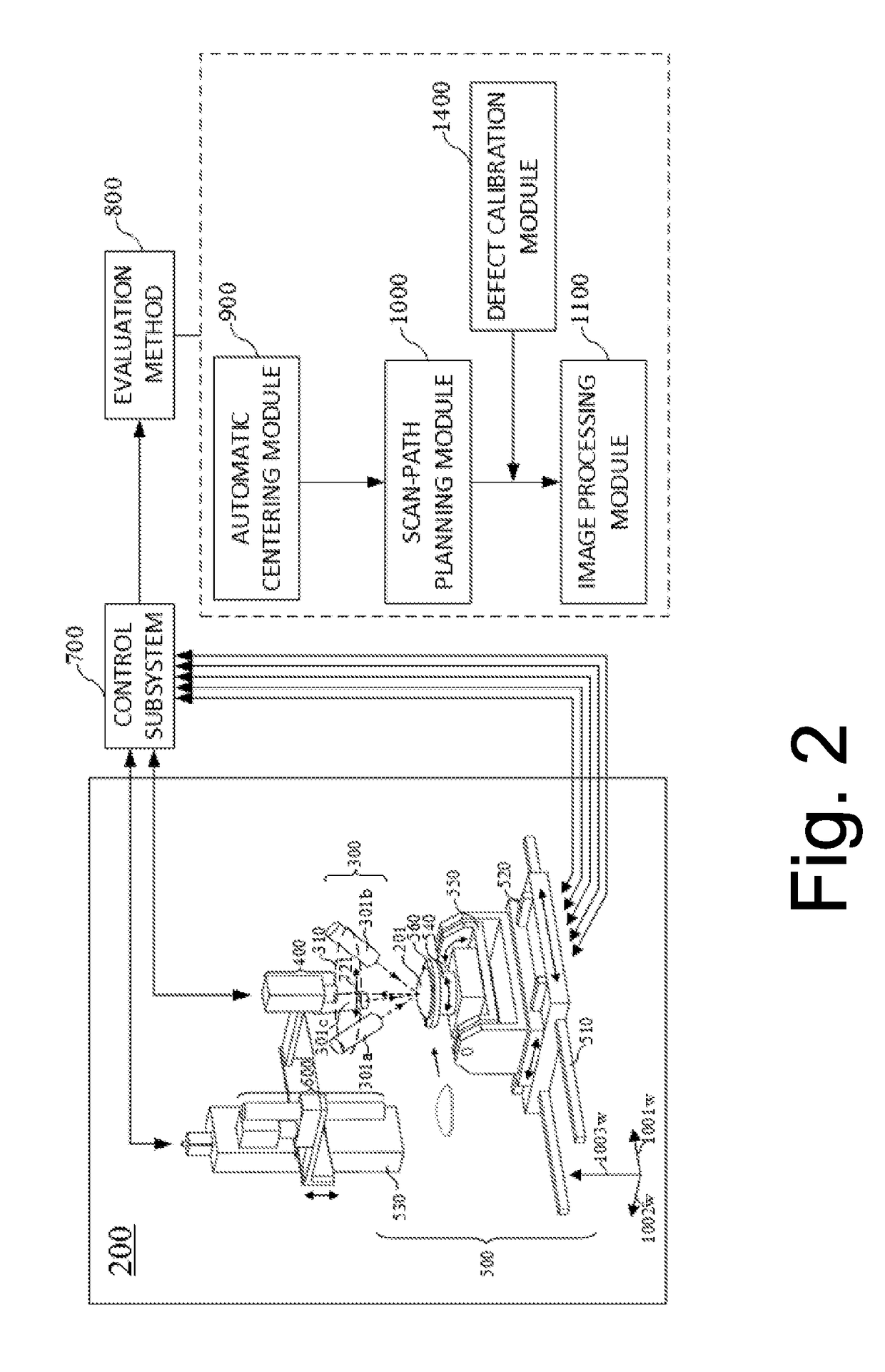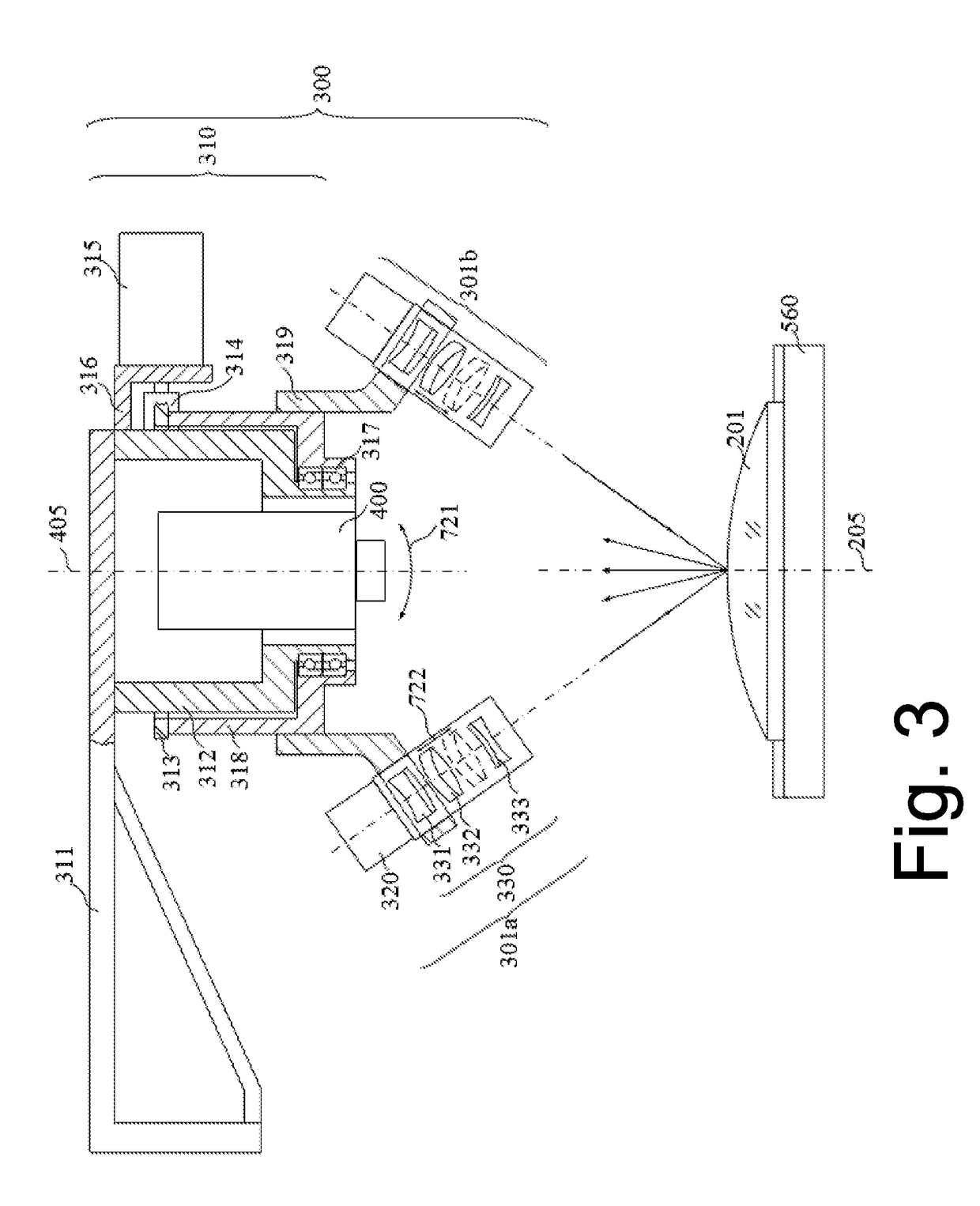Surface defects evaluation system and method for spherical optical components
a technology of optical components and defects, applied in the field of machine vision inspection, can solve the problems of secondary damage, subjectivity and uncertainty of visual inspection, energy loss, etc., and achieve the effect of avoiding the influence of subjectivity on the results and enhancing the efficiency and precision of inspection
- Summary
- Abstract
- Description
- Claims
- Application Information
AI Technical Summary
Benefits of technology
Problems solved by technology
Method used
Image
Examples
first embodiment
[0116]Hereafter, a first embodiment of the present invention will be described in detail with reference to FIGS. 1 to 25, which describes surface defects evaluation system and method for convex spherical optical components.
[0117]FIG. 1 illustrates a block diagram of surface defects evaluation system and method for spherical optical components in accordance with the first and the second embodiment of the present invention. The SSDES 100 comprises a defect imaging subsystem 200, a control subsystem 700. The defect imaging subsystem 200 is adapted to acquire microscopic scattering dark-field images suitable for digital image processing. The control subsystem 700 drives the movements of the illumination unit 300, the MS-DFI unit 400, the SPPA unit 500 and the centering unit 600, to acquire images of the inspected surface of the spherical optical component.
[0118]Referring to FIG. 1, the defect imaging subsystem 200 comprises an illumination unit 300, an MS-DFI unit 400, a SPPA unit 500 a...
second embodiment
[0206]Hereafter, a second embodiment of the present invention will be described in detail with reference to FIGS. 26 to 30, which describes surface defects evaluation system and method for concave spherical optical components.
[0207]Surface defects evaluation system and method for concave spherical optical components described in the second embodiment of the present invention is similar to that for convex spherical optical components described in the first embodiment of the present invention. In order to avoid confusion and repetition, parts in FIGS. 26 to 30 which are relevant to parts in FIGS. 1 to 25 are indicated by the same reference numbers. Emphasis in the second embodiment is also put on parts different from the first embodiment.
[0208]FIG. 26 illustrates a schematic diagram of the illumination light path in accordance with the second embodiment of the present invention. The parallel light emitted by the uniform surface light source 320 passes through the lens group 330 and be...
third embodiment
[0212]Hereafter, a third embodiment of the present invention will be described in detail with reference to FIGS. 31 to 33, which describes surface defects evaluation system and method for the small-aperture spherical optical components. Similarly, in order to avoid confusion and repetition, parts in FIGS. 31 to 33 which are relevant to parts in FIGS. 1 to 25 are indicated by the same reference numbers. Emphasis in the third embodiment is also put on parts different from the first embodiment.
[0213]The small-aperture spherical optical component 1801 is characterized by that its aperture is smaller than the illumination aperture of the illumination unit 300 and the object field of view of the MS-DFI unit 400. Thus, the MS-DFI unit 400 needs to acquire only one sub-aperture located at the vertex of the spherical surface 1009 (as is illustrated in FIG. 15), which is the full-aperture image covering the whole surface of the small-aperture spherical optical components. Referring to FIGS. 3...
PUM
| Property | Measurement | Unit |
|---|---|---|
| incident angle | aaaaa | aaaaa |
| angle | aaaaa | aaaaa |
| incident angle | aaaaa | aaaaa |
Abstract
Description
Claims
Application Information
 Login to View More
Login to View More - R&D
- Intellectual Property
- Life Sciences
- Materials
- Tech Scout
- Unparalleled Data Quality
- Higher Quality Content
- 60% Fewer Hallucinations
Browse by: Latest US Patents, China's latest patents, Technical Efficacy Thesaurus, Application Domain, Technology Topic, Popular Technical Reports.
© 2025 PatSnap. All rights reserved.Legal|Privacy policy|Modern Slavery Act Transparency Statement|Sitemap|About US| Contact US: help@patsnap.com



